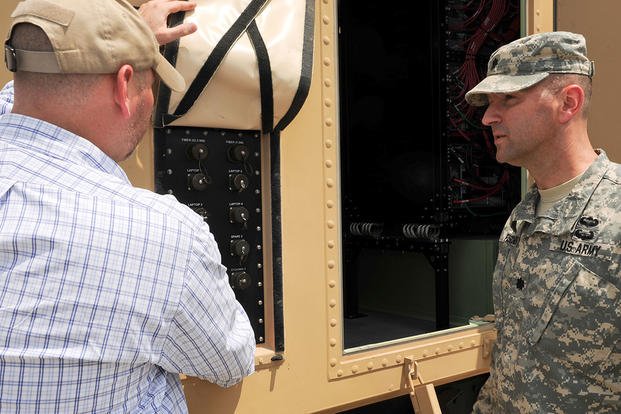In exploring opportunities for veteran to pursue careers in science, technology, engineering and math (STEM), I visited with Dr. Cesare Wright, lecturer and Leadership Specialist in the Rice Center for Engineering Leadership (RCEL) at Rice University, in Houston, Texas. The internship program that he developed at Rice University has secured 100% placement of RCEL students since its launch (compared to a national average of 40% for undergraduates.) Here, he shares his insights for employers seeking to hire veterans:
Lida: What do veterans offer to employers hiring for STEM careers?
Cesare: Veterans are an invaluable and perhaps overlooked resource to private employers, defense contractors and the government hiring for careers in science, technology, engineering and math. Through their military training, real-world experience, and unparalleled dedication to service, veterans offer a unique scope of skills that translate directly to success and competitiveness in industry, particularly in science and technology.
Military veterans receive specific technical training that applies to discrete and proprietary technology. Veterans also offer a variety of practical skills that cut across all industries, including project management, systems thinking, risk management, and resourcefulness. These skills are particularly relevant in engineering and technical fields, where the ability to effectively manage project logistics, mitigate risks, and efficiently mobilize resources can save time, money, and lives.
Veterans are also accustomed to operating as integral components of a much larger “machine.” As such, they understand the critical importance of systems thinking; for instance, veterans recognize the value of organizational efficiency and are profoundly adept at completing the tasks that they have been assigned, while infusing the value of their own personal strengths and skills into the organization more broadly.
Lida: How are the veteran’s experiences making them well suited for private industry?
Cesare: In the military, service members learn, apply, and practice their skills under high-stakes conditions, where failure has devastating consequences. Speaking from personal experience, as someone who has led complex projects and prepared students to do the same, I find the biggest disconnect between classroom learning and real-world application to be the inability to simulate the stakes of failure in the safe space of a formal educational setting.
When my university students participate in an engineering design challenge or role-playing exercise, the experience is always mediated by the realization that the money, lives, and reputational capital that they risk through failure are purely symbolic. Service members face a very different reality: If they fail to anticipate risk, secure necessary resources, or effectively delegate crucial tasks, the results may prove catastrophic, endangering their own safety and that of their friends, and potentially compromising national security interests, placing us all in danger.
When translated to an industry context, the practical experience of veterans provides a layer of maturity that is difficult to cultivate in a traditional academic environment or education program.
Lida: What advantage do veterans bring to employers?
Cesare: Clearly, veterans bring a vast array of skills (technical and soft skills) and formative experiences that align with the demands of industry. In fact, companies spend over $13.6 billion annually on leadership training (2012 study on leadership, Bersin & Associates, Leadership Development Factbook 2012: Benchmarks and Trends in U.S. Leadership Development) to bring their workforce up to standards of innovation that keeps them competitive.
Since veterans come equipped with the skills that it may otherwise take years to develop in other employees, the benefits of hiring veterans into STEM jobs, from an efficiency and cost-effectiveness standpoint, seem obvious.
Lida: How does military leadership training compare to the propriety leadership training that many employers provide?
Cesare: Many employers may not have considered the relative efficacy of attempting to train non-veteran employees, as compared to hiring from a military pool. According to Bersin & Associates’ research, the “most sophisticated companies” utilize a 70-20-10 development model – 70% experiential, 20% coaching, feedback, networking, and other collaborative activities, and 10% formal education-based learning interventions.
Aside from a select handful of university-based leadership programs, including the RCEL program at Rice University, and the Gordon Engineering Leadership (GEL) program at the Massachusetts Institute of Technology (MIT), the vast majority of leadership development programs rely on traditional lecture-oriented training modules, which engender little in the way of deep learning and long-term comprehension – less than 50% retention of knowledge after two weeks in most cases (The Pausing Principle: Increasing the Efficiency of Memory for Ongoing Events. Di Vesta, Francis J.; Smith, Deborah A. Contemporary Educational Psychology, v4 n3 p288-96 Jul 1979).
By contrast, veterans are acculturated to a model of skills acquisition that is reflective of the 70-20-10 model, since their military service consists of intervals of formal training, followed by extended periods of real-world application of skills, and framed by ongoing mentorship and coaching.
Through extensive training and authentic, real-world experience in applied leadership, veterans are unparalleled in their ability to execute a plan and mobilize a team to complete a project on time, on budget, and on scope. In short, service members don’t just think about leadership, or discuss strategies, or theorize and contemplate; they decisively execute and implement applied leadership solutions to complex problems (often in a life or death context).
For more information on the Service First initiative – a tuition-free Microsoft sponsored UAV/UAS STEM education program that Dr. Wright and Dyan Gibbens (USAF and Trumbull Unmanned) developed exclusively for children of military families, please visit: http://www.kinoeyecenter.com/servicefirst/.





